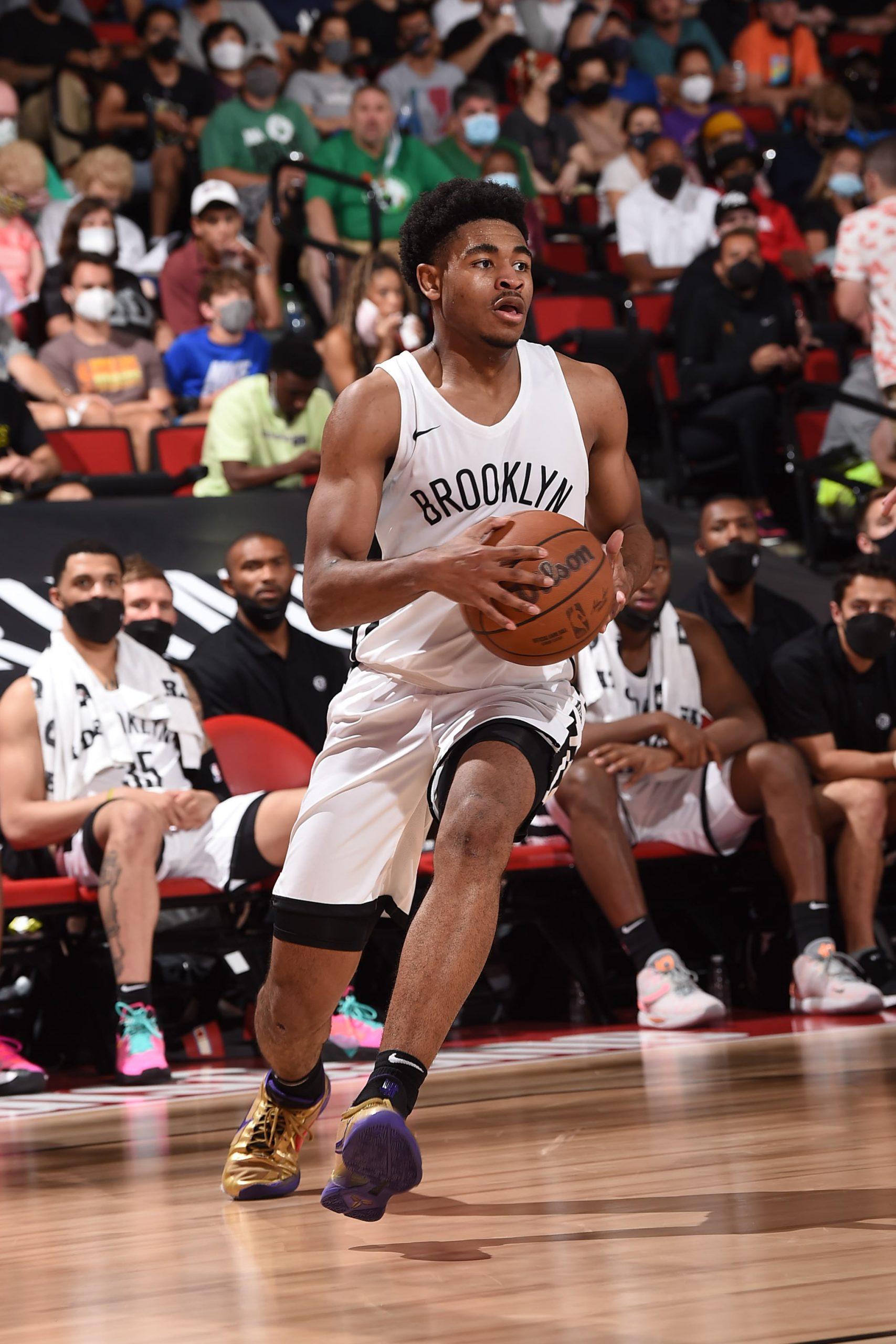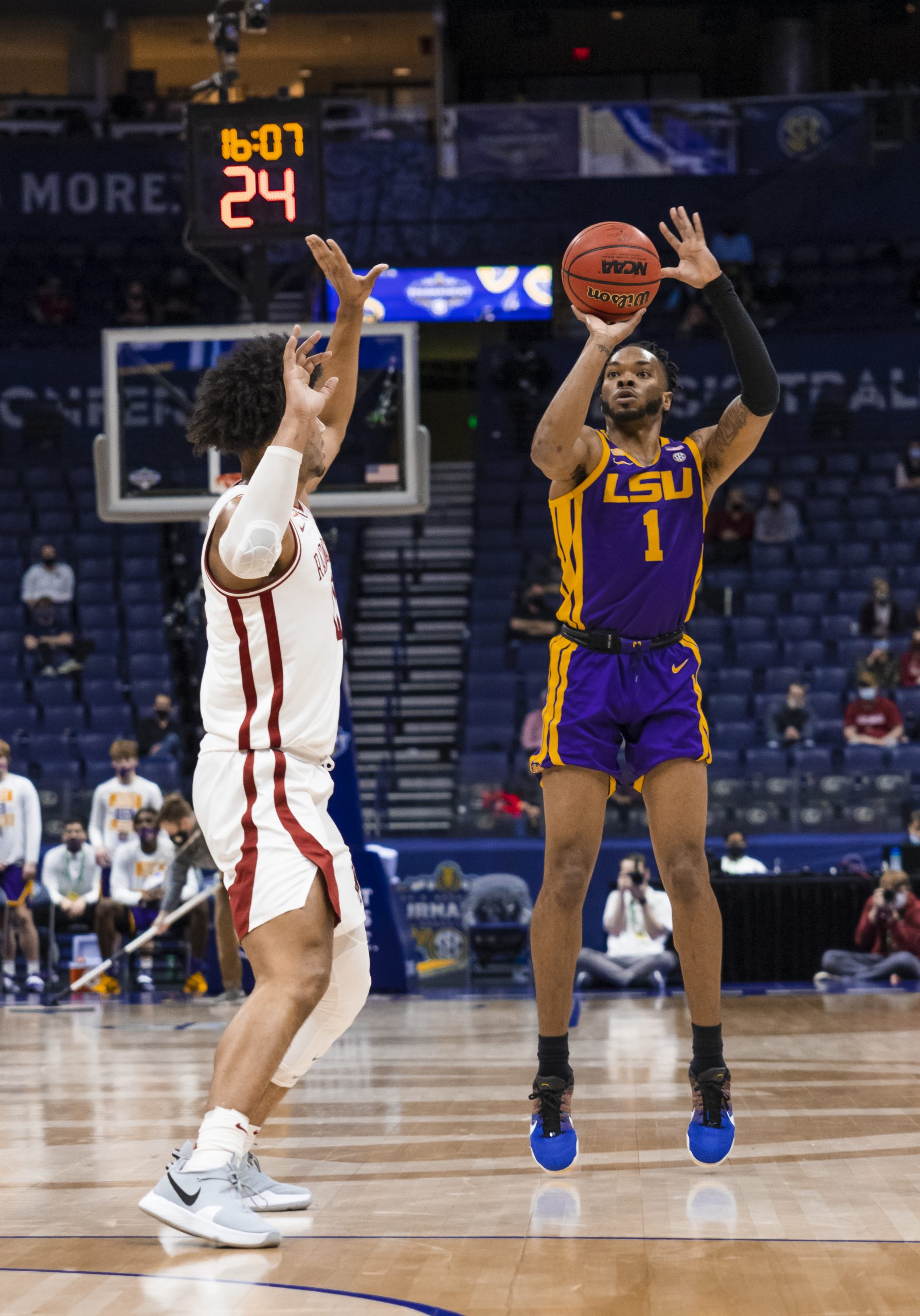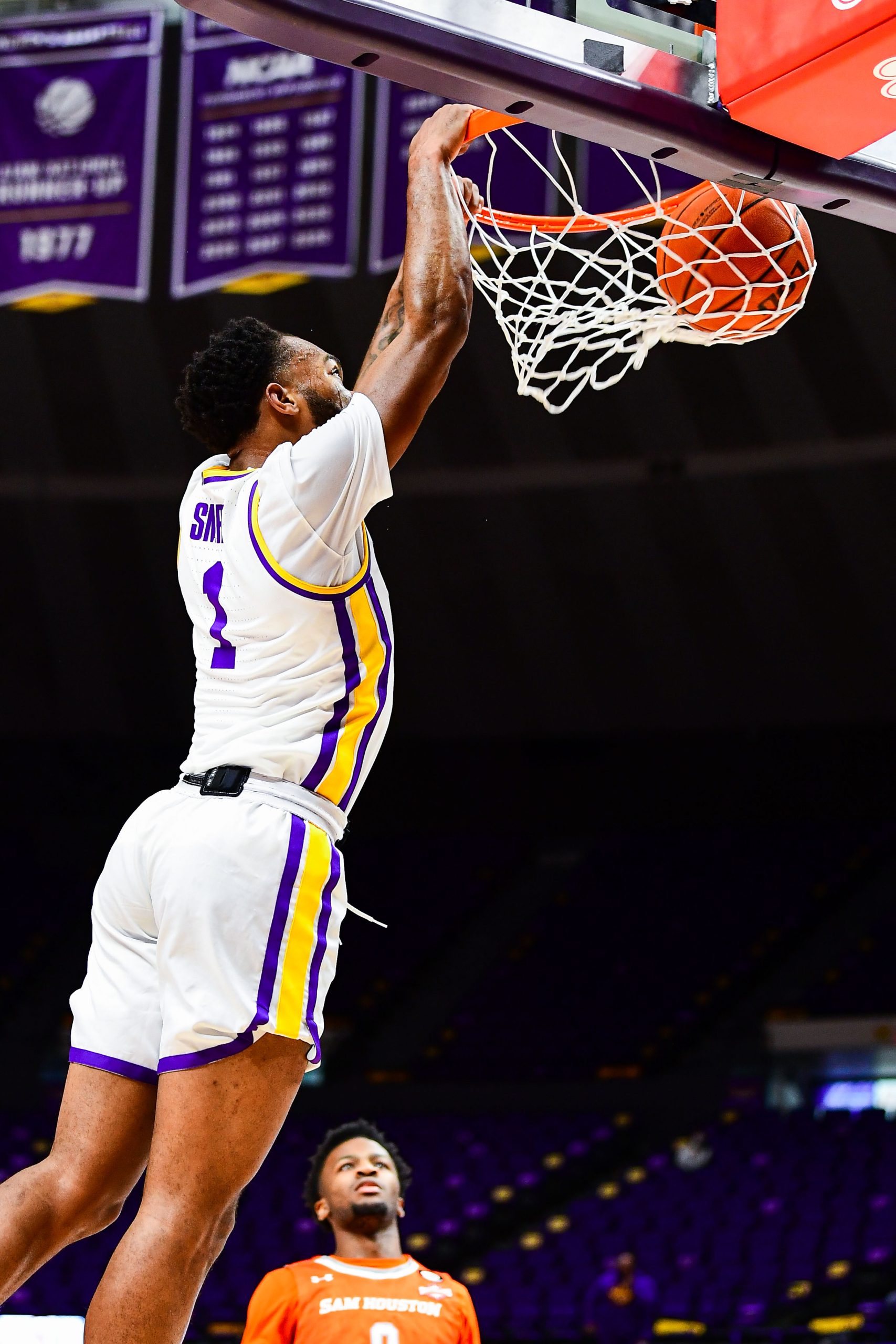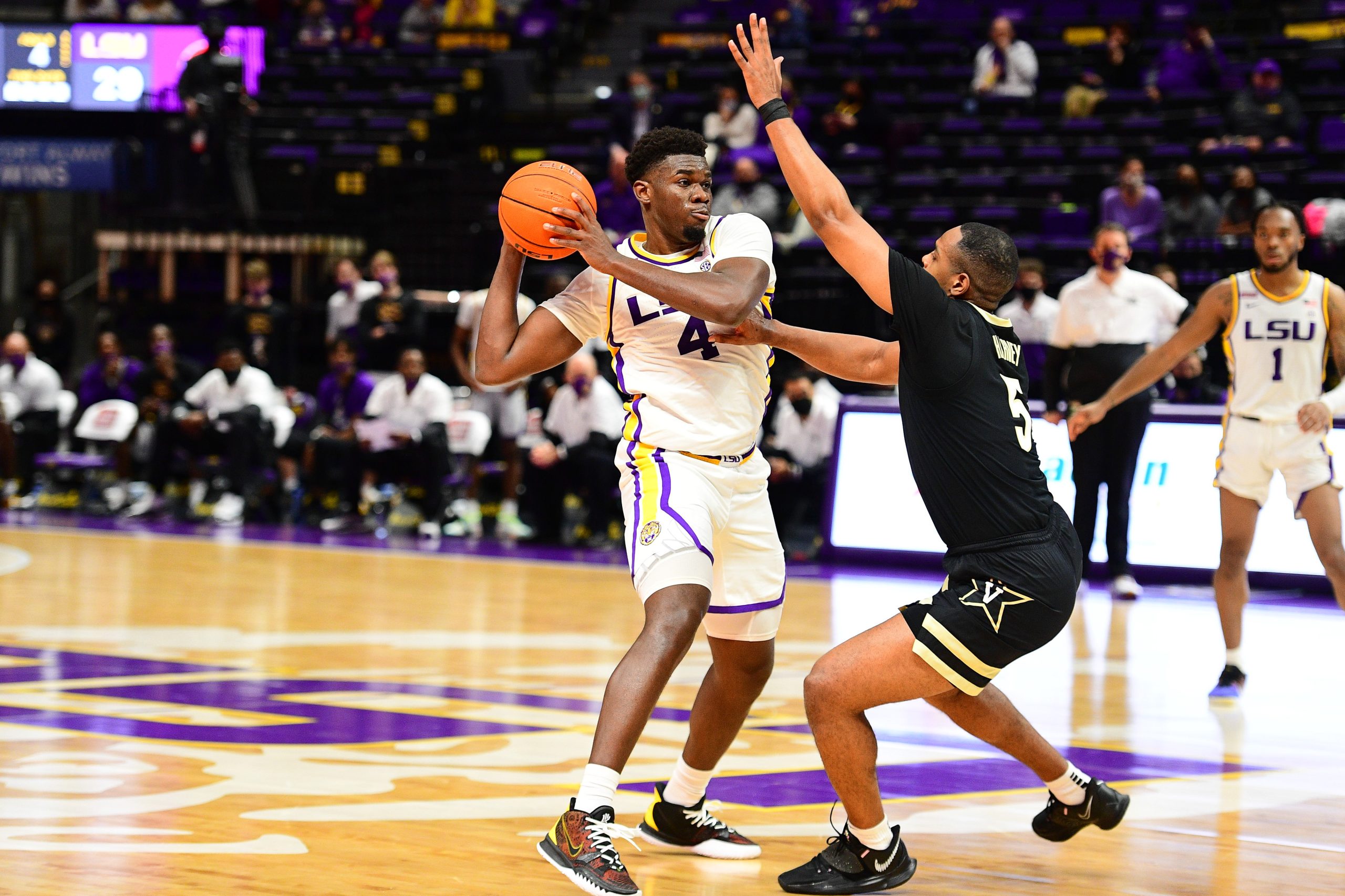
The NBA’s Las Vegas Summer League concluded Tuesday night with eight former LSU players participating.
Former Tigers’ guard and Brooklyn Nets rookie Cam Thomas, who led the league in scoring averaging 27 points, was named co-MVP of the league and was also named to the league’s first-team.
Here are their final stats and an analysis with a grade for each:
G Cam Thomas (Brooklyn Nets): Played in four games and started two for the 3-2 Nets, averaged 28.8 minutes, 27 points, 1.8 rebounds, 2 assists, 3.8 turnovers and 1.8 fouls. Finished shooting 33 of 78 (41.3 percent) from the field, 9 of 25 (36 percent) in 3-pointers and 33 of 39 (84.6 percent) from the free throw line.
Analysis: Most of the teams in the first round who passed on Thomas until the Nets gleefully picked him No. 27 overall may be kicking themselves after watching Thomas lead the summer league in scoring. Like at LSU, his shooting percentages were similar as was his knack for getting to the free throw line. But he seemed very comfortable in the pro game. He had the ball in his hands more and showed he could take defenders off the dribble. He was clutch, winning two games for the Nets with a running 3-pointer in a second overtime and 13 straight points to close another game. Grade: A
G Skylar Mays (Atlanta Hawks): Started four games for the 2-3 Hawks, averaged 28.6 minutes, 18.8 points, 2.5 rebounds, 3.3 assists, 1.5 steals, 1.5 turnovers and 2.8 fouls. Finished shooting 25 of 54 (46.3 percent) from the field, 9 of 27 (33.3 percent) in 3-pointers and 16 of 16 (100 percent) from the free throw line.
Analysis: Mays played in 40 games (33 regular season, 7 playoffs) for the Hawks last season as a rookie. The way he played in Vegas, he seems ready for more playing time. His scoring increased every game in Vegas, topped by his 26 points and 9 assists against the Heat. In many ways, the 6-4 Mays is cut in the same cloth as former LSU standout Garrett Temple, who is about to begin his 12th NBA season after signing a three-year contract with the New Orleans Pelicans. Though Mays is two inches shorter than Temple, he has the same long arms and quickness, plays tough defense, has an ability to adapt to different roles and plays with extreme intelligence. If Mays follows Temple’s template, he could also have a 10-year plus NBA career. Grade: A
G Antonio Blakeney (Portland Trail Blazers): Played in five games for the 2-3 Trail Blazers, averaged 22.7 minutes, 15.6 points and 3.6 rebounds. Finished shooting 35 of 63 (55.5 percent) from the field, 8 of 22 (36.3 percent) in 3-pointers and 9 of 10 (90 percent) from the free throw line.
Analysis: Blakeney played 76 games in two seasons with Chicago Bulls before being released at the end of the 2018-19 season. He’s played the last two seasons in Japan and in the G-League. In Vegas, he showed what he’s always been – instant offense and excellent athleticism with not much interest in playing defense. With the right NBA team, he could still be a fit. But he shouldn’t have any illusions about ever being a full-time NBA starter. Grade: B
F Jarell Martin (Utah Jazz): Played in four games and started one for the 3-2 Jazz, averaged 14.1 minutes, 8.5 points and 4.3 rebounds. Finished shooting 10 of 18 (55.6 percent) from the field, 2 of 5 (40 percent) in 3-pointers and 6 of 7 (85.7 percent) from the free throw line.
Analysis: The 27-year old Martin has 184 games of NBA experience and hasn’t played in the league the past three seasons while playing in the G-League and Australia. The Jazz gave him token minutes in his first three summer league games. Then, they started him in the fourth and his double-double of 23 points and 12 rebounds were high marks for all Jazz summer league players. Martin is now 6-10, 240 pounds. If he commits to being a tough rebounder and scoring in the paint, he can get back in the NBA. But if he wants to wander around the 3-point line jacking up treys, it won’t happen. Grade: B
F Trendon Watford (Portland Trail Blazers): Played in four games and started one for the 2-3 Trail Blazers, averaged 22.1 minutes, 5.8 points, 4.5 rebounds, 2 assists, 1.3 blocks, 1.8 turnovers and 4 fouls. Finished shooting 8 of 19 (42.1 percent) from the field, 1 of 4 (25 percent) in 3-pointers and 6 of 9 (66.7 percent) from the free throw line.
Analysis: Looked like a rookie should look – lost and uncomfortable. At 6-9 and 240, the undrafted Watford certainly has an NBA frame. But he’s in a bit of a dilemma because he doesn’t shoot well enough from outside to play small forward and doesn’t jump well enough to play power forward. He needs to double down on working on his inside game, especially using his body to create angles for short jump hooks which he must start consistently making. He’s still just 20 years old, so his best basketball is in front of him if he improves his weaknesses. Grade: C
F Emmitt Williams (Oklahoma City Thunder): Played in two games for the 2-3 Thunder, averaged 11:34, 7.5 points and 3 rebounds. Finished shooting 6 of 6 (100 percent) from the field, 2 of 2 (100 percent) in 3-pointers and 1 of 2 (50 percent) from the free throw line.
Analysis: Williams spent time last season playing in Israel and the G-League. He played in the final two of the Thunder’s five Las Vegas games and had 14 points in 19:04 of playing time in his last game. Williams is 6-6 and 225 pounds, a definite small forward who had to play inside at LSU. He’s never been a face-up, take-you-off-the dribble offensive threat. He is and always will be instant, blue-collar energy off the bench, a Dennis Rodman-type on the court. If there’s an NBA team that has that specific role, Williams is a fit. Grade: C
PG Tremont Waters, Houston Rockets: Joined the 3-2 Rockets for the final two games of the summer league, played in both, averaged 31:40 minutes, 4.5 points, 5.5 rebounds and 3.5 assists. Finished shooting 3 of 18 (16.7 percent) from the field and 1 of 9 (11.1 percent) in 3-pointers.
Analysis: Waters, the G League’s Rookie of the Year in 2020 who played 26 games with the Boston Celtics last season, just became an unrestricted free agent when the Celtics didn’t extend him a qualifying offer. He showed up in Vegas playing for the Rockets in their final two games. The 5-10 Waters shot terribly but he was his usual bundle of energy in other areas. His first game Vegas stat line was 5 points (on 1 for 9 field goal shooting), 9 rebounds, 5 assists, 5 steals and 5 turnovers. The Pels have just under $1 million left to spend on this year’s roster. Waters is worth that investment. Grade: C
G Javonte Smart (Miami Heat): Played in four games for the 2-3 Heat with no starts, averaged 18.8 minutes, 5.8 points, 3 rebounds, 1.8 assists and 2 turnovers. Finished shooting 9 of 34 (26.5 percent) from the field, 3 of 14 (21.4 percent) in 3-pointers and 2 of 3 (.667 percent) from the free throw line.
Analysis: His obvious liability in his three-year career at LSU – lack of an outside shot – showed up big in Vegas. His shooting percentages were awful. He looked unsure when to shoot or not. Smart’s saving grace for the Tigers was his ability to beat defenders off the dribble to score, draw fouls or dish passes to open shooters. He did none of that in Vegas. His one-handed set shot (somewhat like the way Hall of Famer Magic Johnson used to shoot) is awkward but could work in the NBA if he gets with a shooting coach. Grade: D




Be the first to comment